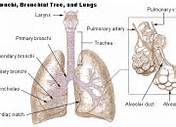Studies explore use of genetics to help determine appropriate treatment for fever in children:
Two studies appearing in JAMA examine the use of genetic tests to help rule out a serious bacterial infection in infants with fever, and also to determine if an infection is bacterial or viral in children with fever.
In one study, Michael Levin, F.R.C.P.C.H., of Imperial College London, and colleagues investigated whether bacterial infection can be distinguished from other causes of fever in children by the pattern of host genes activated or suppressed in blood in response to the infection and whether a subset of these genes could be identified as the basis for a diagnostic test.
The majority of febrile (with fever) children have self-resolving viral infection, but a small proportion have life-threatening bacterial infections. Because clinical features do not reliably distinguish bacterial from viral infection, many children worldwide receive unnecessary antibiotic treatment, while bacterial infection is missed in others. A number of studies have suggested that specific infections can be identified by the pattern of host genes activated during the inflammatory response.
This study included febrile children presenting to participating hospitals in the United Kingdom, Spain, the Netherlands, and the United States between 2009-2013, and placed in a discovery group or validation group. Each group was classified after microbiological investigation as having definite bacterial infection, definite viral infection, or indeterminate infection. RNA expression signatures (determined with a blood sample) distinguishing definite bacterial from viral infection were identified in the discovery group and diagnostic performance assessed in the validation group. Additional validation was undertaken in separate studies of children with meningococcal disease (n = 24) and inflammatory diseases (n = 48) and on published gene expression datasets.
The discovery group of 240 children (median age, 19 months) included 52 with definite bacterial infection, of whom 36 (69 percent) required intensive care, and 92 with definite viral infection, of whom 32 (35 percent) required intensive care. Ninety-six children had indeterminate infection. The researchers identified a host whole blood RNA transcriptomic signature that distinguished bacterial from viral infection with 2 gene transcripts. The signature also distinguished bacterial infection from childhood inflammatory diseases, systemic lupus erythematosus, juvenile idiopathic arthritis, and discriminated bacterial from viral infection in published adult studies. Of the children in the indeterminate groups, 46 percent were classified as having bacterial infection, although 95 percent received antibiotic treatment.
The authors write that a major challenge in using transcriptomic signatures for diagnosis is the translation of multitranscript signatures into clinical tests suitable for use in hospital laboratories or at the bedside. "The disease risk score signature, distinguishing viral from bacterial infections with only 2 transcripts, has potential to be translated into a clinically applicable test using current technology such as polymerase chain reaction. Furthermore, new methods for rapid detection of nucleic acids ... have potential for low cost, rapid analysis of multitranscript signatures."
"This study provides preliminary data regarding test accuracy of a 2-transcript host RNA signature discriminating bacterial from viral infection in febrile children. Further studies are needed in diverse groups of patients to assess accuracy and clinical utility of this test in different clinical settings."


No comments:
Post a Comment